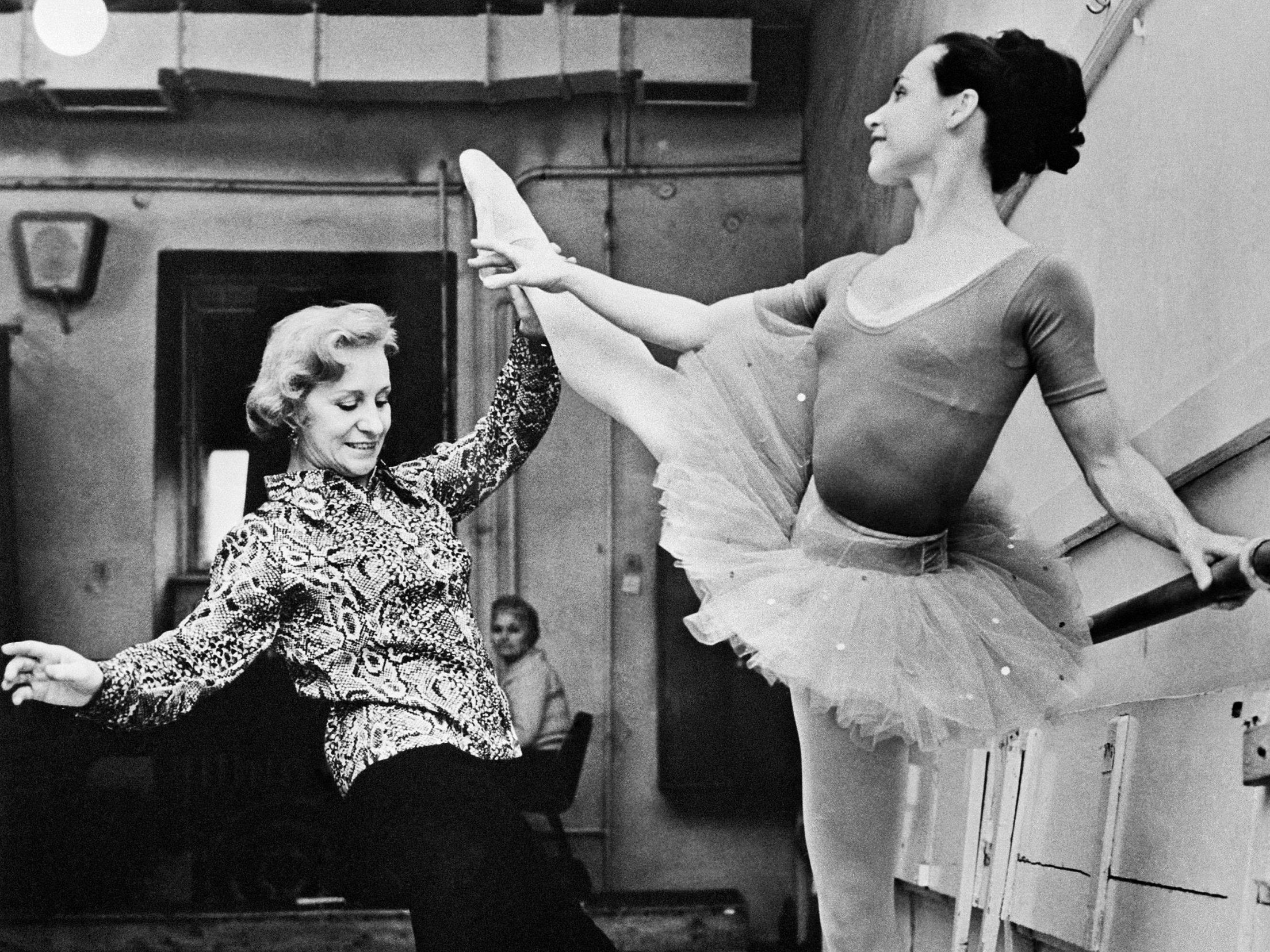Zsuzsa Kun: Bolshoi-trained Hungarian ballet dancer and teacher
In career, as on stage, she jumped to impressive heights, securing her popularity as a star of Budapest’s State Ballet with ‘Giselle’

Zsuzsa Kun was one of the last great ballerinas of a generation of Hungarian dancers who emerged before the Soviet teaching method became predominant there.
She was still in kindergarten when her father, Ferenc, and his opera-loving wife, Viktoria, took her to the ballet. Kun was mesmerised by the performance and decided that she wanted to be a dancer. For the rest of her life, Zsuzsa, who has died aged 84, never doubted that for her that was the only choice.
Her parents sent her to the ballet school operating within Budapest’s Hungarian State Opera, but with the arrival of the Second World War classes became haphazard or ceased altogether. She was afraid of being left behind, so her parents took her to the renowned ballet master Ferenc Nadasi.
The parents wanted to know if it was worthwhile for Zsuzsa to commute from the outskirts of Budapest. Nadasi looked her, put his hand on her head and declared: “The little girl is very talented”. Zsuzsa trained with him from 1943-49. She became a member of the Hungarian State Ballet Company in 1949.
Even as a teenager her outstanding technical qualities were obvious. Her jump was remarkable and she astounded everyone when, for the end of year concert, Nadasi choreographed for her a number on Bartók’s Allegro Barbaro. If ever a piece of music was made for virtuoso male dancing it was this – yet Zsuzsa made a success of it.
In 1950 the first Soviet ballet masters arrived at Hungary and started mounting their versions of The Nutcracker and The Flames of Paris. The 16-year-old Zsuzsa had solos in both and soon she was dancing the leading roles.
For the 1955-56 season Zsuzsa, her partner and first husband, Victor Fulop, received an invitation to Moscow’s Bolshoi Theatre, a huge honour. She received coaching from the greatest Soviet teachers, among them Olga Lepeshinskaya. Their paths crossed again when Lepeshinskaya visited Budapest for two years as a guest ballet master.
When the couple returned to Hungary from the Soviet Union they were undisputed stars. Kun performed the full canon of roles in the classical repertoire, but perhaps her most memorable was the title role of Giselle.
I was a pupil in the Ballet Academy and stood behind her in the corps de ballet, her dancing as the spirit of Giselle astonished us. Her jumps soared at such a height yet remained so effortless we had not seen the like before and rarely since.
Apart from shining in the roles of Odette/Odile (Swan Lake), Aurora (The Sleeping Beauty) and Swanilda (Coppélia), many ballets were created for her by Hungarian choreographers. Her Sylvia, in Laszlo Seregi’s ballet-within-the ballet comedy setting, proved Zsuzsa’s humour was as powerful as the heartbreaking Flavia in the same choreographer’s Spartacus.
Zsuzsa danced all over the world either as a guest artist or with the Hungarian company – her career took in most European capitals (including London with the Royal Festival Ballet). But she maintained she was always most nervous in front of a home audience because she felt they knew her and they had expectations.
In 1972 she became the principal of the Hungarian State Ballet Institute (now the Hungarian Dance Academy), but found the adjustment from performer to teacher difficult. It took some time before she settled in her role and felt confident as a ballet mistress. In later years she became a revered coach as well.
She married three times – each of her partners were ballet dancers from the same company. The young infatuation with the charismatic Victor Fulop wore off soon and they parted company. Her second husband Levente Sipeki was also a principal dancer; they had a son, Ferenc. Zsuzsa said both her marriages broke down because her husbands were jealous – not of other men but of her mother, whom she worshipped and who had a strong claim on her attention.
Her third husband was Jeno Gal, a character dancer who became principal of the Dance Academy. He died in 2015.
Kun was the recipient of the state’s most prestigious awards for artists, from the Kossuth Prize to eternal member of the Hungarian State Opera. She was made first professor emeritus in 2007 and, last year, rector emeritus of the academy.
Zsuzsa Kun died in Rakospalota at the same village of the outskirt of Budapest where she was born. There the prima ballerina felt that she always remained little Zsuzsa, the doctor’s daughter.
Recently, I watched a portrait film about her made by Hungarian Television (Magyar Televizio). There are excerpts from her various roles; a solo from The Flames of Paris took my breath away. There are not many ballerinas from her era of the Fifties and Sixties who achieved such technical brilliance. She will be remembered as a dancer whose emotional intensity and outstanding technique always remained in perfect balance.
Zsuzsa Kun, Hungarian ballet dancer, born 9 December 1934, died 24 December 2018
Subscribe to Independent Premium to bookmark this article
Want to bookmark your favourite articles and stories to read or reference later? Start your Independent Premium subscription today.

Join our commenting forum
Join thought-provoking conversations, follow other Independent readers and see their replies